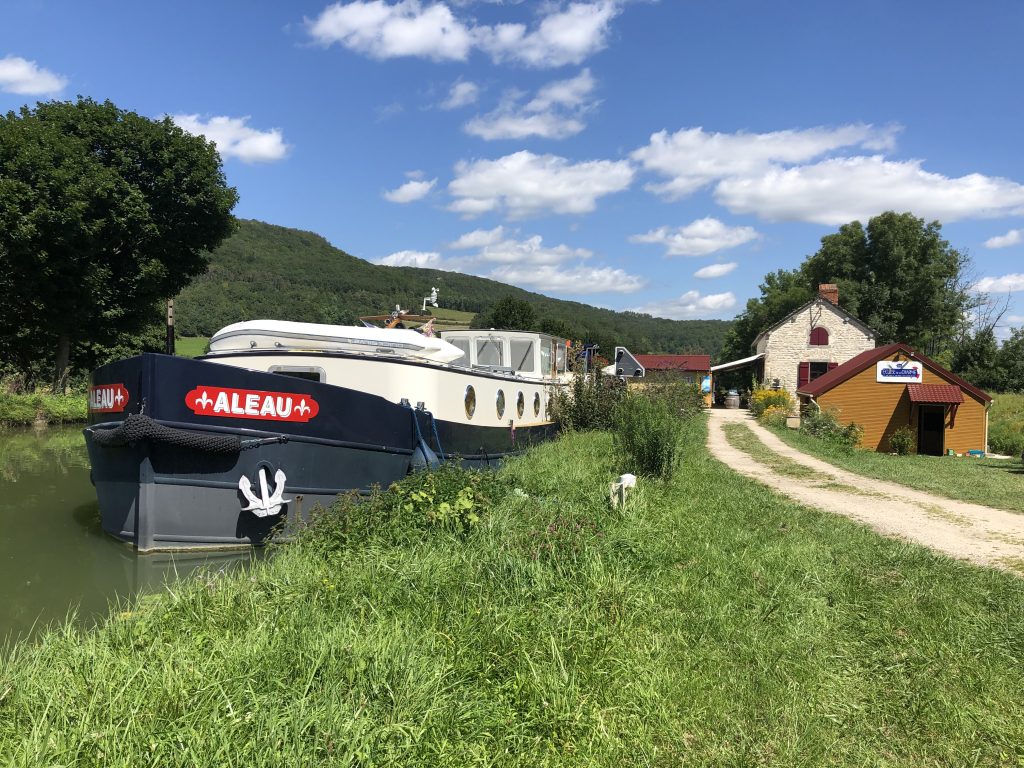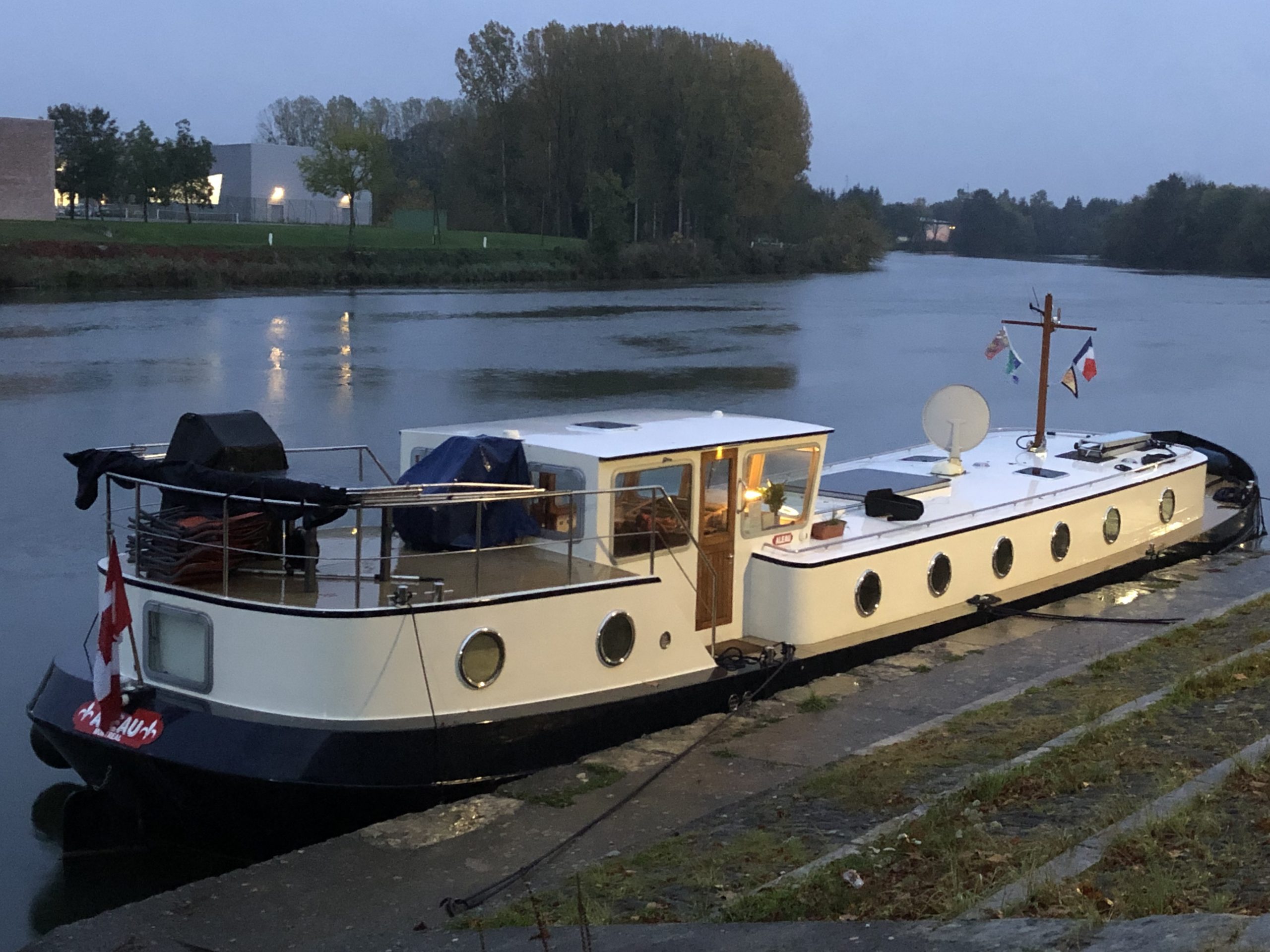It was an armada as we all left La Bussière-sur-Ouche and headed towards Pont d’Ouche. First, Peary.
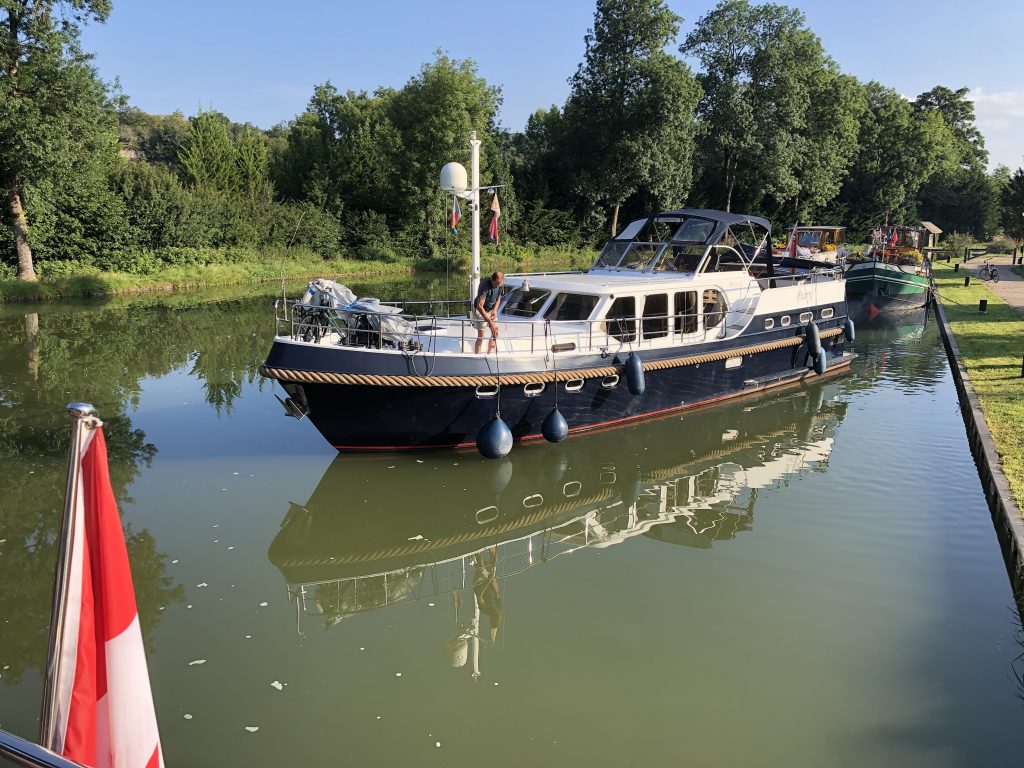
Then L’Escapade and Melba.

And then, us.

The locks aren’t big enough to hold Melba and Aleau together. We had to wait as we watched Melba rise in the lock – and then wait some more as the VNF lowered the water in the lock and opened the gates for us. You can’t be in a hurry when barging. You can see our mast is partially stepped (lowered) as we wouldn’t make it under the low bridges with it all the way up. Well, we would – the mast wouldn’t.

The locks on the Canal de Bourgogne are manned – or, more often than not, womaned. The VNF workers follow us from lock to lock until they reach the end of their territory and another VNF worker takes over. When we’re lucky, two VNF workers are assigned to us. That makes passing through the locks much quicker. Once we’ve left the lock, they scoot ahead – on scooters, of course – and make sure the next lock is ready for us. Sometimes, when the distance between locks is quite short – as is often the case on the Burgundy Canal – we arrive before them and have to hold position in front of the gates and wait for them to open. If we see them pass by before we reach the lock, we know all is good.
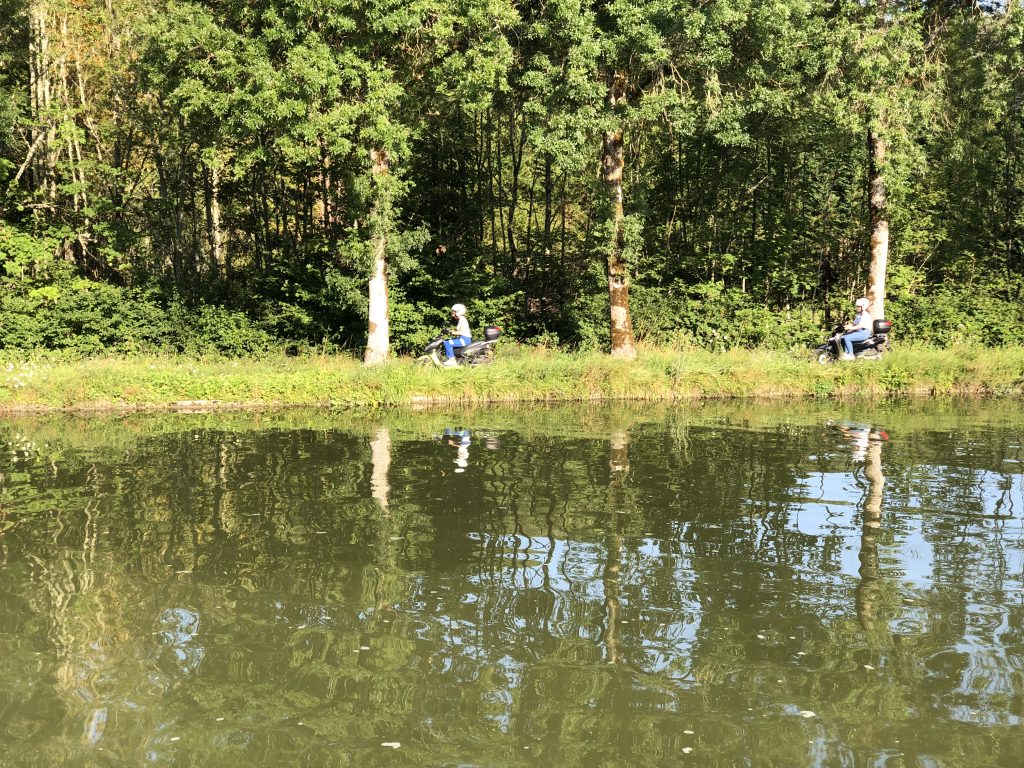
We love to arrive at a lock and see a scooter already parked close to the gate.
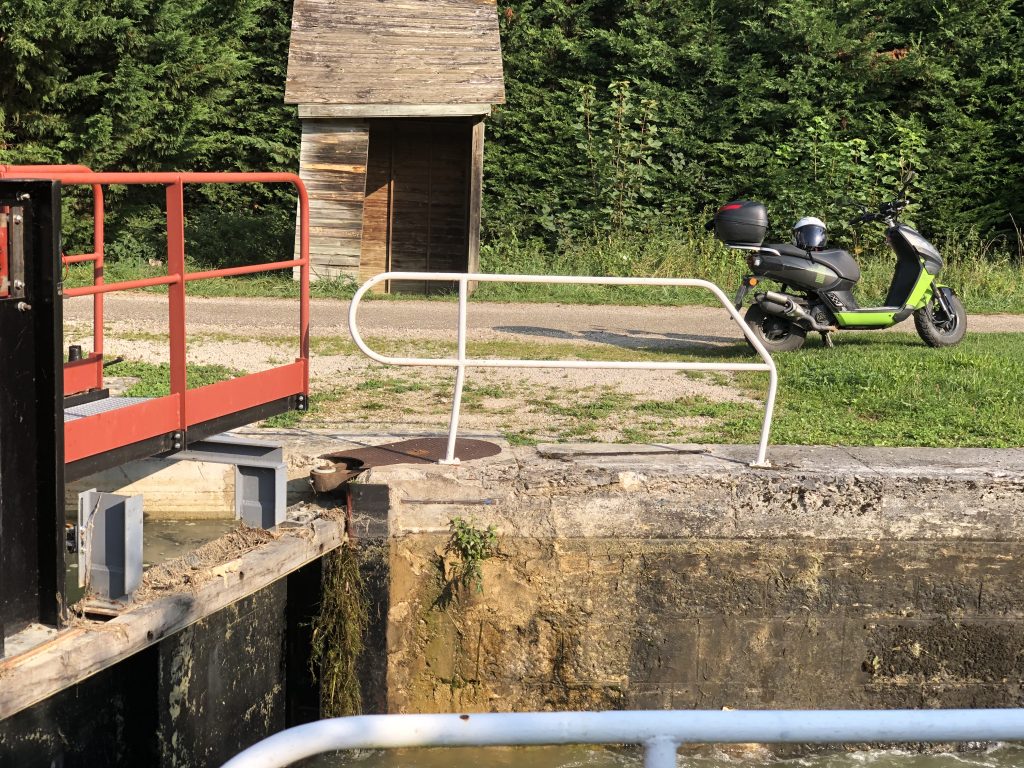
Sometimes, we’ve barely left one lock before we’re at the next. We have to wait for the VNF workers to catch up to us.

Operating a lock is hard work. The sluices (the doors inside the gates that allow water to flow into the lock) are raised and lowered by hand by using a handle VNF workers carry with them.
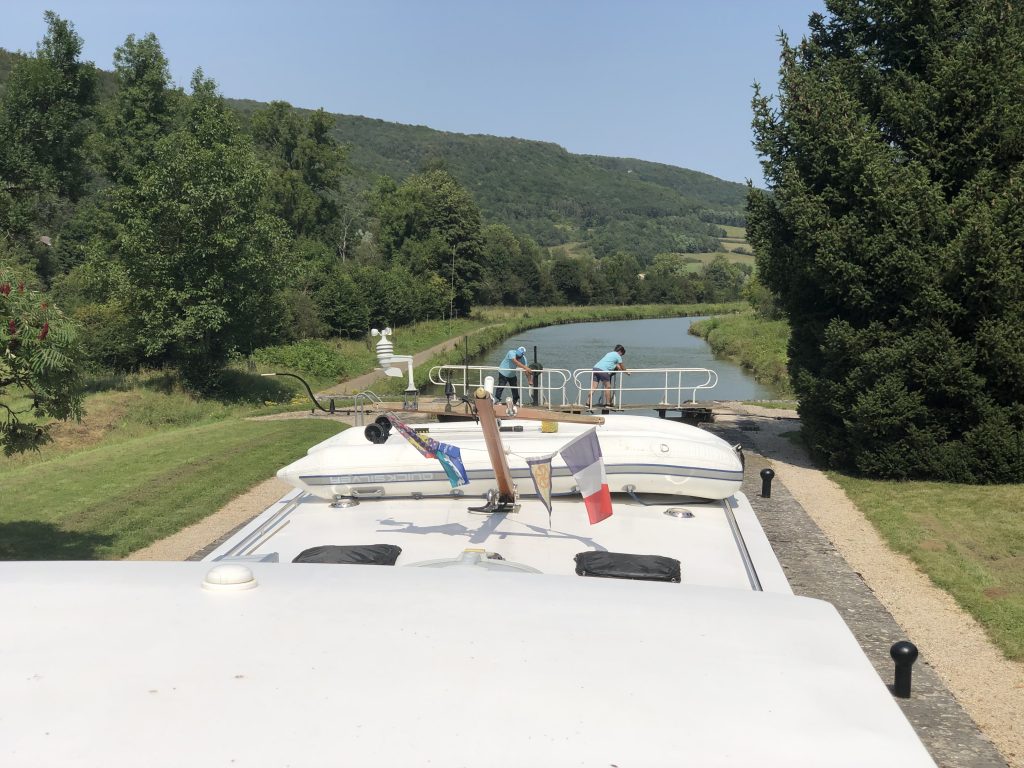
The really arduous part is pushing the lock gates open and closed. That’s a lot water each door has to be pushed through. Once one door is opened (or closed), the lock-keeper then has to walk the full length of the lock, cross the canal, walk back along the full length of the lock and open (or close) the other door. Having two VNF workers, one on each side of the lock, makes passing through a lock much quicker.

Locking is a busy time for bargees, as well. Going up, there’s a lot of water rushing into the lock and it takes a lot of effort to keep the barge in position. Going down, there’s less strength needed – but there are a few added dangers.
Here Debra and Mark hold Melba in place.
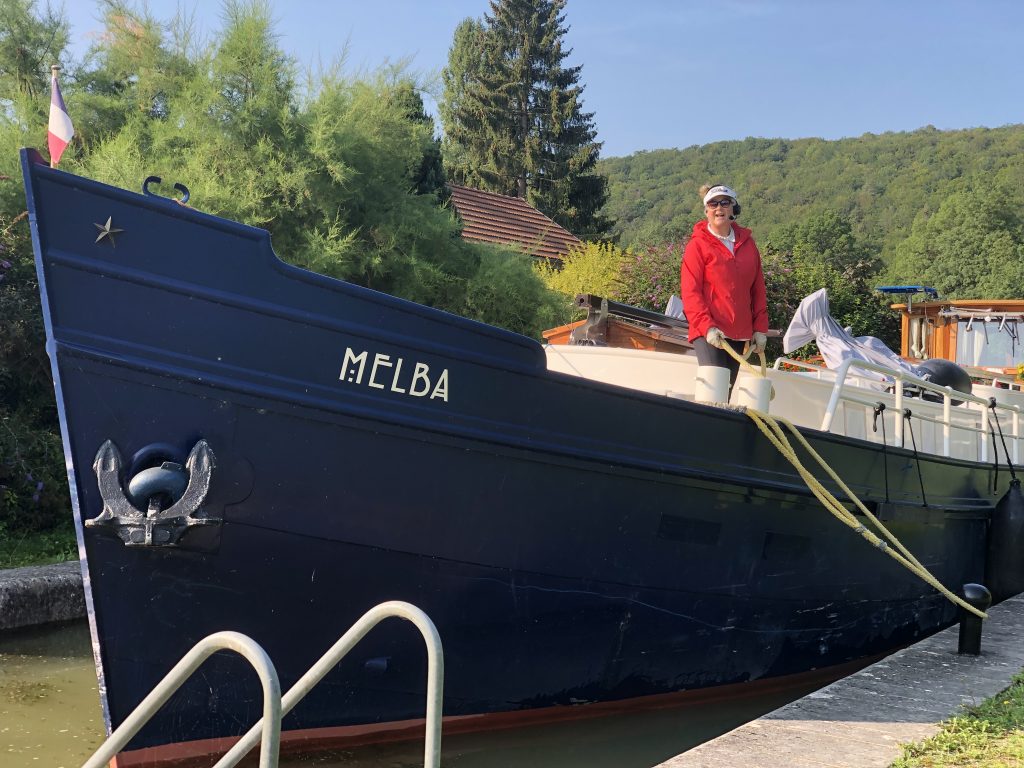
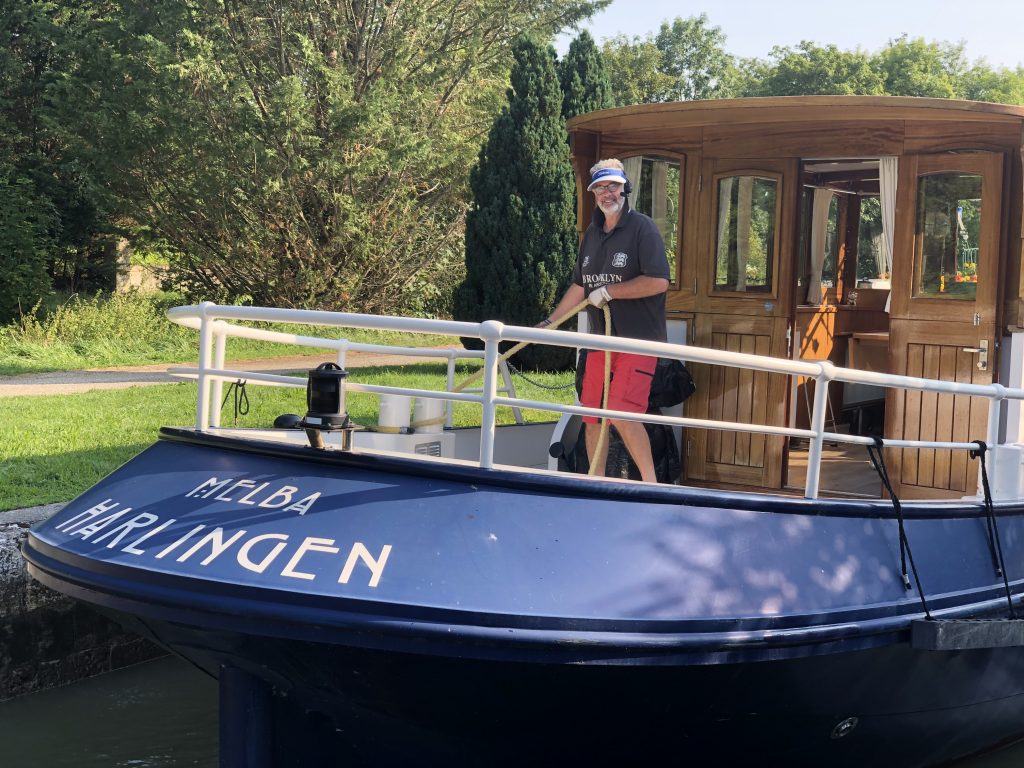
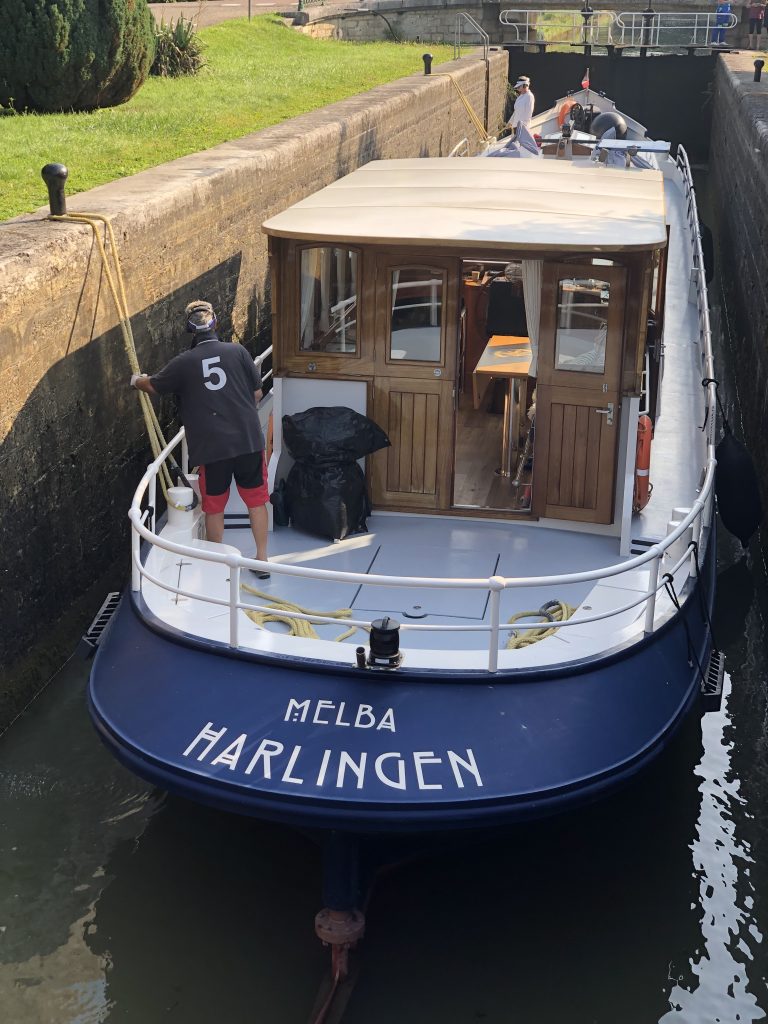
The school I went to, all the barge books I’ve read, and even some VNF workers insist that two ropes be used when going up in a lock – one at the bow and one at the stern. When the sluices are opened, a lot of water comes in very quickly. It can toss even a large barge around as if it were a toy duck in a bathtub. In the photo below, just one of the two sluices is open – and not even all the way! It takes a lot of strength to keep the barge tight against the lock wall as the rush of water tries to get by. Jeannie and I are exhausted by the end of the day. Most of the time, we stop and tie up for the night long before the locks close for the day.

Then, David on L’Escapade said there’s a much easier way to go up in the locks – even if not officially sanctioned. His suggestion is to use a single rope – called a “Bow Spring.” Run it from a bollard at the bow, around a bollard on the lock that is well behind the bow bollard on Aleau, and then back to Aleau where it is securely tied to the bow bollard. I then put the engine in its slowest forward speed (called ‘tick-over’) and keep pushing Aleau forward. Since it is tied to the lock bollard, it can’t go forward. I turn the wheel away from the lock wall. That brings the stern in against the wall – and the rope, under tension from Aleau trying to go forward, keeps the bow against the wall. So much easier than constantly pulling in ropes as Aleau rises in the lock. I was nervous the first time we tried it. But it works. Thanks for the lesson, David.
Below is a photo of the “Bow Spring” in action. The rope is tied to one of our two bollards at the bow, looped around a bollard in the lock, and than back to the other bow-bollard on Aleau where it is securely tied. Jeannie keeps an eye on the rope as I use the engine and the wheel to keep Aleau against the lock wall. When we first enter the lock, I must make sure to leave enough room between the bow of Aleau and the lock gate. As the water rises in the lock, less rope is needed – but we can’t untie. So Aleau slowly moves forward towards the lock gate as I use the throttle to take up slack in the rope. It is crucial that I have left enough room when we first tie up in the lock. Once the water starts pouring into the lock, it is impossible to make any changes. So far, so good.

Descending in the lock requires less strength – but even more attention. It is where things can go wrong – very quickly.
The first danger is the sill at the upstream end of the lock. Submerged and invisible when we enter the lock, it is vital that the stern of Aleau be kept well forward of the sill. If not, as the water level in the lock drops, Aleau could be left sitting on the sill. Not good. Sometimes, there’s a line painted on the lock wall indicating where the sill ends. Most of the time there is not. It’s up to me to make sure Aleau is well clear of the sill.
We once had to share a lock – with a smaller boat in front of us. But that meant our stern was just inches from the sill. Of course, since the lock is full when we enter, we can’t see the sill. We will find out the hard way as the water level drops if we’re clear of it – or if we have landed on top of it. I don’t like to share a lock when descending – no matter how small the boat in front of me might be.
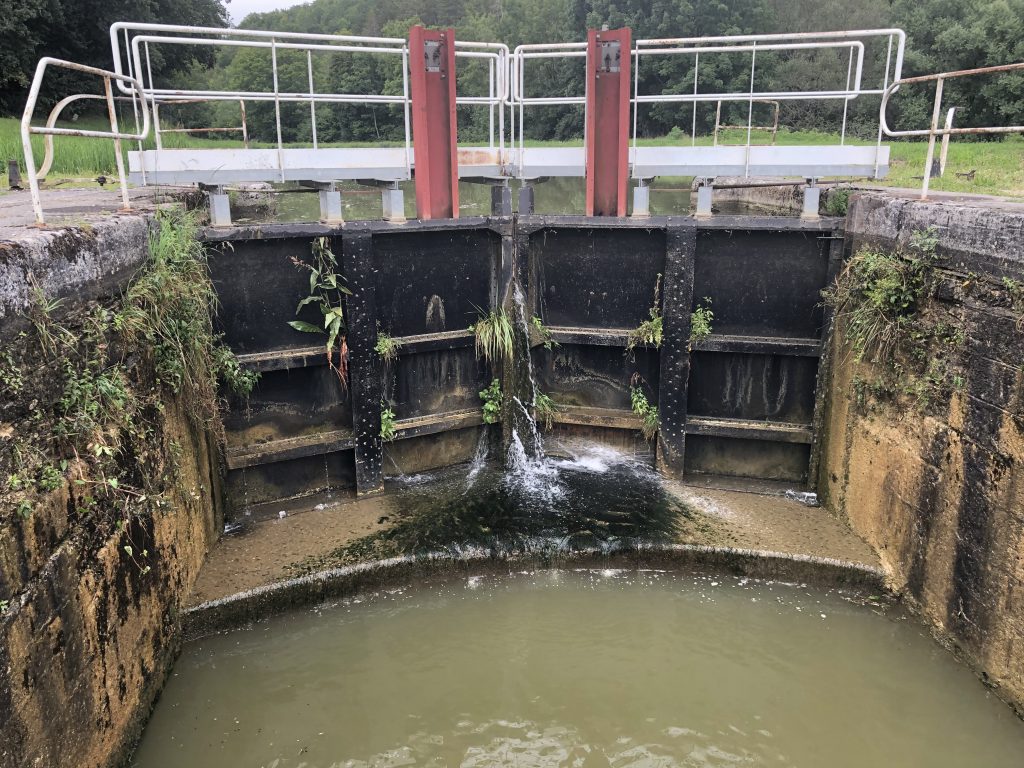
There are two other dangers when descending in a lock. The first is to make sure the rope holding Aleau against the lock does not jam. It can happen in an instant and can lead to Aleau being left hanging in the air as the water drops beneath it. Jeannie and I both have a knife at the ready when we descend. We’ve had a rope jam once and it was a frightening experience. In addition to the rope getting jammed, it can also get stuck in a crack in the lock wall. The result – and the action that must immediately be taken – are the same as with a jammed rope. Cut it! Now!
It’s not just neophytes like us that can get into trouble with just a fraction of a second of inattention. A very experienced bargee with thousands of kilometres and almost as many locks under his belt (life vest?) posted the paragraph below on his Facebook page. I wasn’t going to mention any names – but since he identifies himself in the post, I won’t edit it. It shows how dangerous descending in a lock can be.
“It’s all downstream though so pretty straightforward, er, well, apart from one teeny weeny mishap. I have to confess it was all down to me and a lapse in concentration, usually the way, but there I was rewarding my lock keepers after a long day with a cold beer. L’Escapade tied up temporarily in the lock while I went to get the beers only to find they’d started emptying the lock…..alas spotting the problem was all too late, the rope locked tight an immovable there was nothing to do but stand back and wait for the inevitable. Normally I’d grab the axe we keep nearby for such events but fortunately the rope was an old and worn one and quickly parted under the strain of 70 tons. Note to self….pay more attention when going down in locks!“
Below, Jeannie is keeping tension on the rope – and letting it out slowly as Aleau descends in the lock. Below that, the cracks that can trap a rope and leave a barge hanging in the air.


All that said, locking is a rewarding experience. It begins well before the lock. As we approach, I have to get Aleau lined up so I can take her in straight – without touching the lock walls on either side – and especially, not touching the lock gates. Even though they’re open, they stick out as far as the lock walls. Jeannie stands at the bow and talks me in – letting me know how many inches I have on each side. The answer is always the same – “Not many.”
It is great feeling to get through a lock without having Aleau touch either wall. That happens most of the time. but not always. A crosswind can make life really interesting.
As satisfying as successfully navigating all those locks might be, it is always nice to tie up and relax at the end of the day.
